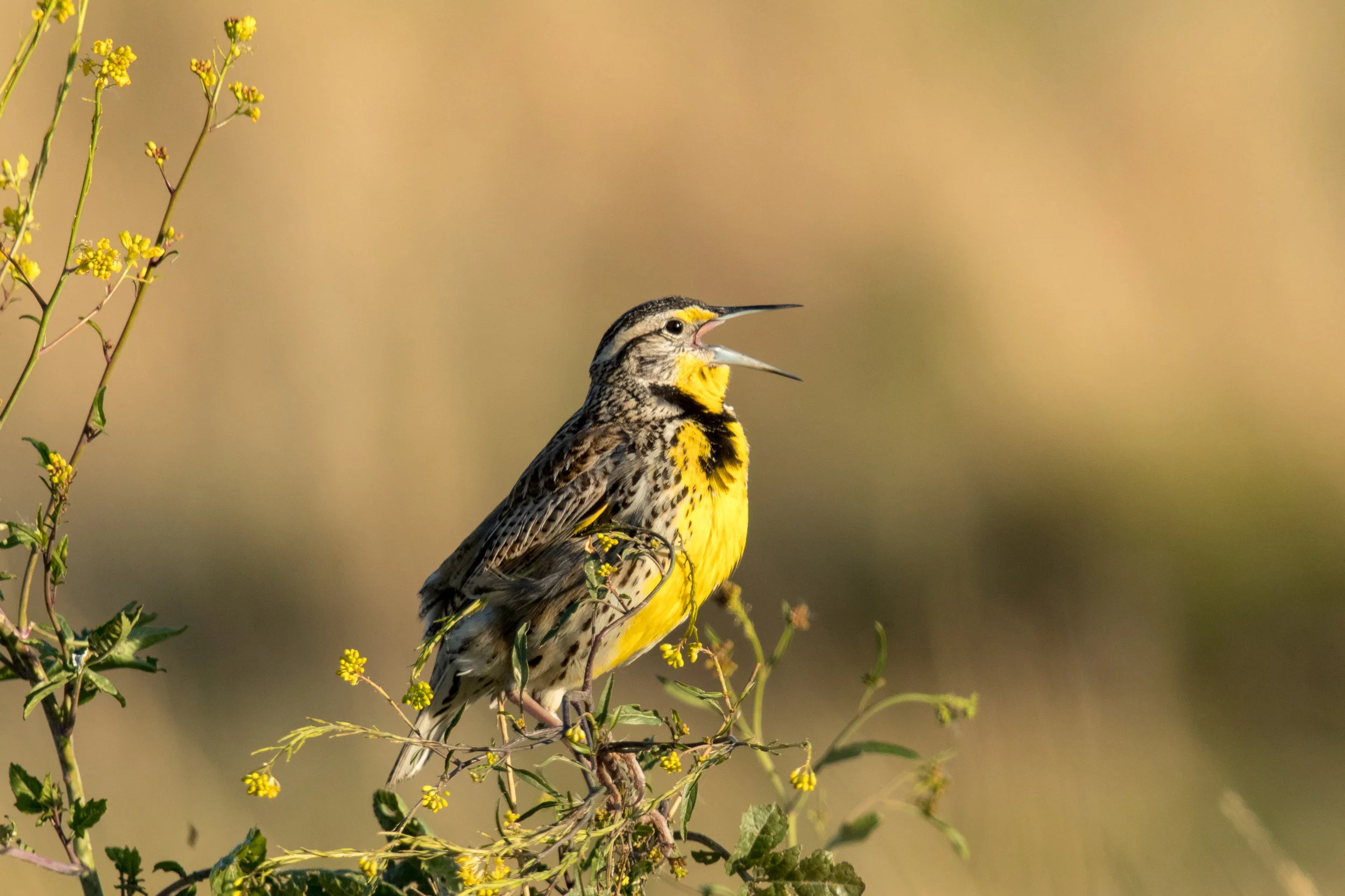Gallery - Grassland Birds
The California Quail has as many as 13 different calls, but it does not have a song. Nevertheless, the bird’s Assembly Call is as familiar as a song.
The Ring-necked Duck is often unknown to new birders whose first look at the dramatically plumaged male brings a shot of awareness that is surprising that such a lovely duck could have not been known to them before this first observation.
Seen during September and October, the American Pipit travels in small flocks and is a regular fall migrant in Washington.
An iconic bird of the sagebrush country, the Greater Sage-Grouse is under threat. Its fate depends on keeping its required sage habitat and maintaining freedom from disturbances due to human activity.
An Indigo Bunting, a common bird of the Eastern United States, made a rare visit to the west at Marymoor Park in Redmond, WA in June 2020.
The lovely all blue male Indigo Bunting has been called the Blue Canary (Dunne) for good reason. Its song is a bright and cheery combination of whistled notes, often in pairs, which can continue for hours throughout the day. This bunting loves to sing from a high and open perch.
Is there anyone who does not smile when they hear a lark singing in flight? Their soft tinkling song brings joy to any day. Read more about this beloved bird.
The Western Meadowlark (WEME) is 9-1/2" long. The WEME has a yellow breast and belly with a black V-shaped breast band. Upper parts are dark brown with dusky edges. When the bird is flushed it shows a conspicuous patch of white on each side of a short tail and flies with several rapid wingbeats alternating with short glides.
Introduced from Asia, the Ring-necked Pheasant is more common in Eastern Washington, but still found west of the Cascade Range.
“He is the free spirit, the wild stallion of the sage,” Donald Kroodsma says in compliment to the Sage Thrasher and its repertoire of over 700 song units which it weaves into tireless singing from the darkness before dawn to nightfall.
Like a sentinel, as described by its species name excubitor, Latin for watchman or guard, the Northern Shrike surveys its territory from a low perch on a shrub or post. With precision it hunts using a direct flight toward its prey-a small rodent or another bird-and dispatches it quickly by “pounding its bill into the base or back of the skull and the using its hooked bill severing the spinal cord between the neck vertebrae as falcons do” (Sibley).
Named after the gemstone lapis lazuli, the Lazuli Bunting is a brilliant spring songster.
The Yellow-breasted Chat is the most unwarbler-like warbler. Ornithologists have debated where it best belongs in the world of birds, but for now it is in the Parulidae, the family of the warblers. Physically it is distinguished from other warblers by its large size and heavy bill.
The White Wagtail is a common bird across Europe and Asia and there are nine subspecies identified. Two of the subspecies Motacilla alba ocularis and Motacilla alba lugens can be found in western Alaska.
A bird of the forest, the Ruffed Grouse populates a widespread area of southern and western Canada and the northern United States including the Pacific Northwest (Rusch, et al).
Its genus is the same as a McKay’s Bunting and comes from the Greek plektron meaning a clawlike tool for striking the lyre, referring to the long, straight hind claw and phenax meaning cheat, or false, as the claw only appears to be like a plektron. The species name, nivalis, is Latin for ‘snowy.’
The Wild Turkey being a wary bird and considered a “bird of courage” by Benjamin Franklin is very different from its domesticated relative (Alderfer).
















